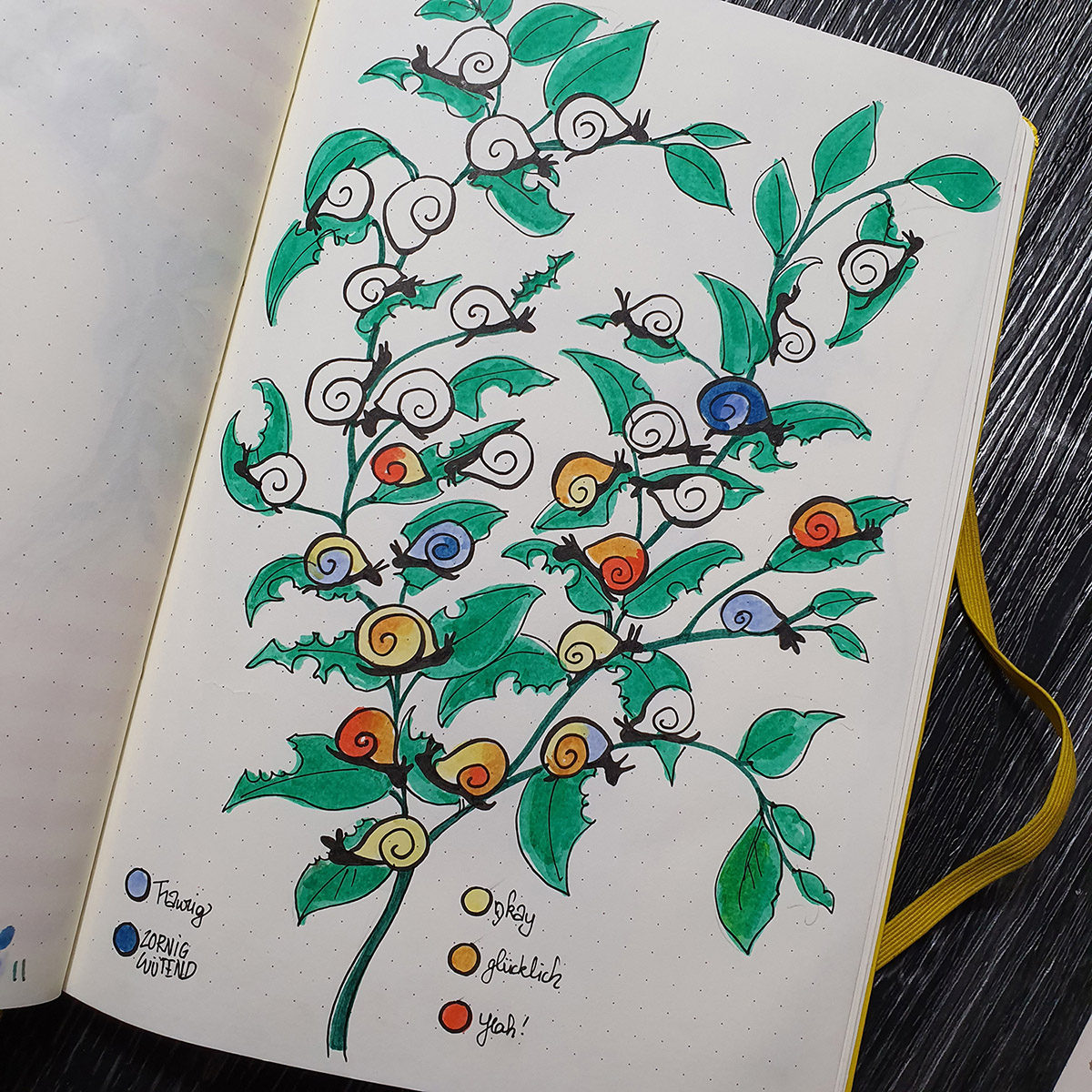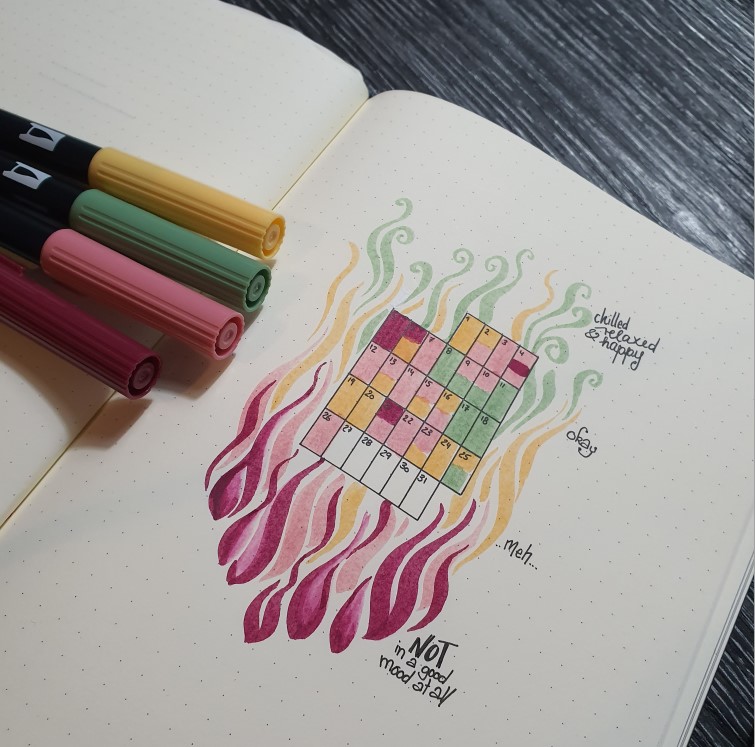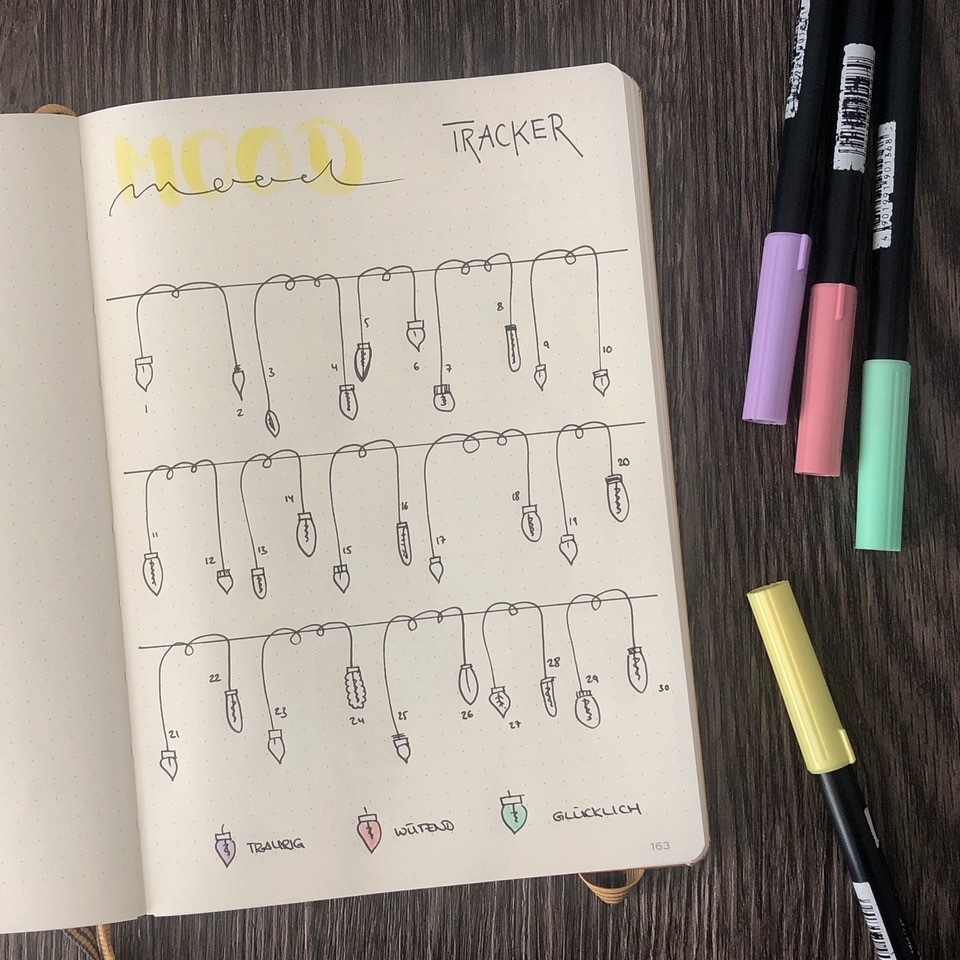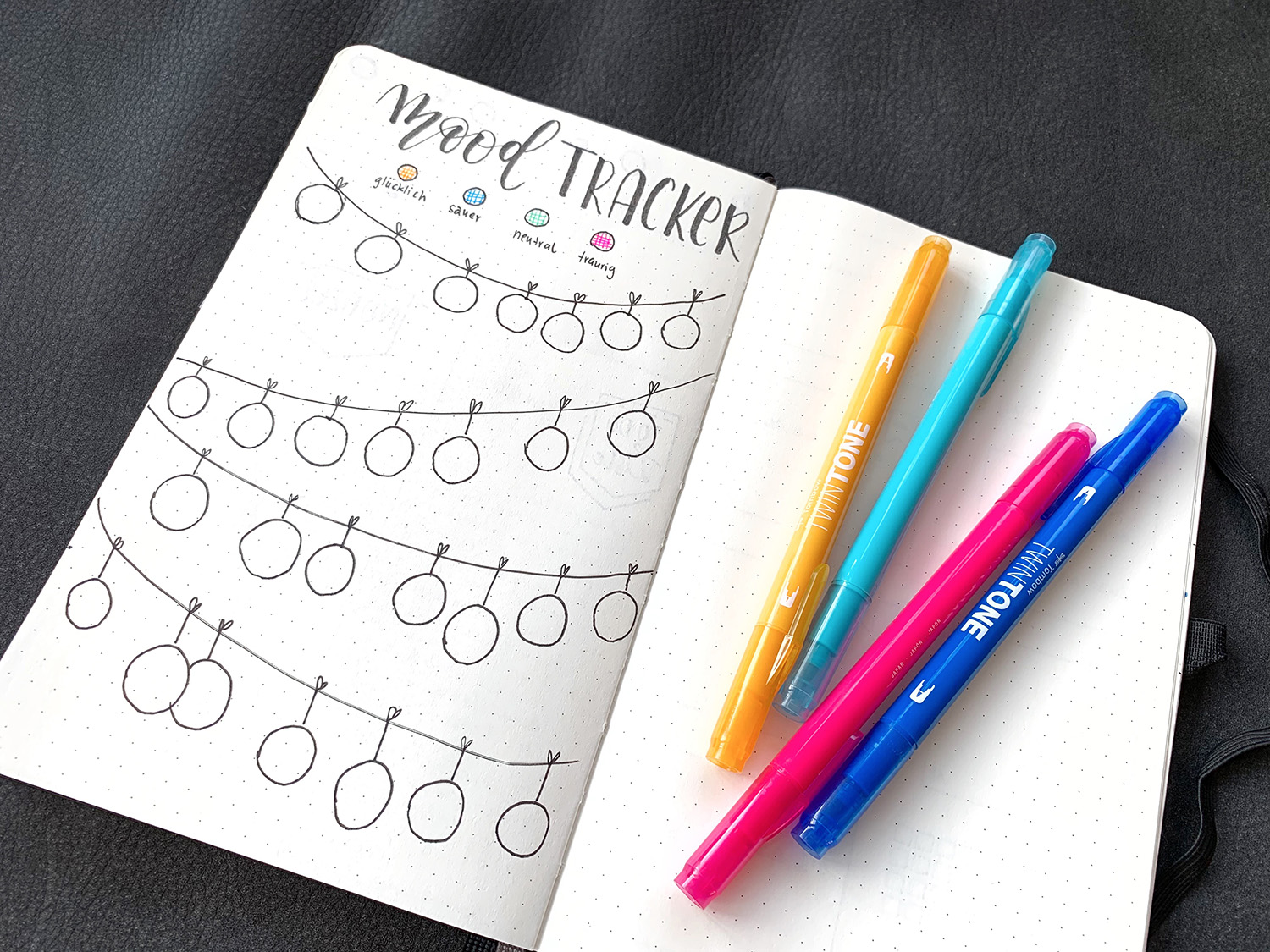What exactly is a mood tracker and how can I design one for my Bullet Journal?
Pause for a moment. Close your eyes and listen to your inner self. In a hectic everyday life, we often don’t take any time to listen to ourselves for a brief moment and find out how we’re feeling. A mood tracker combines awareness, self-care and slowing down. Every single day of the month, you take a few minutes for yourself and track how you felt on this day in your Bullet Journal. Were you happy? Sad? Stressed? Ecstatic? - You can track your own mood individually and thus gain an overview of how you felt over the month.
Read on if you’d like to learn how to design a mood tracker and which emotions you can track! There are also some tips and tricks by bullet journal artists to read here.
Why should I track my mood?
With a mood tracker, it’s not simply about drawing something colourful. A mandala would be better if you want to do that. It's about taking 5 minutes out of each evening for yourself. A time when you review the day and evaluate it. Was it a particularly special day? Did you get annoyed about something? You can record this mood in your tracker design using a colour code. For example, you could use red for angry or yellow for happy.
The month is over and now what?
At the end of the month, you take a look at how it went for you. And then? It's entirely up to you. Were you really stressed over the past month? Then try to consciously make some space for yourself when planning the month. Plan some time to go for a walk, do some sport or simply spoil yourself lots with a face mask or peel. You were happy the whole month long? Good for you! Savour these memories. Maybe next month you can create a page in your mood tracker listing the things that make you happy. Every time you enter a happy day in your mood tracker, you can record exactly what made you happy. Did you get really angry over the last month but you don't want to get angry like that again? Then take a look at your mood in greater depth on angry days and ask yourself why you feel this way. It might just help you to be a bit calmer in some situations.
I’m happy every day. Should I even bother with a mood tracker?
Even if you jump out of bed every morning with a grin on your face, the glass is always half full for you and the sun is always shining, you could still find a mood tracker useful. The principle of being aware is still of use in this situation. If at the end of each day you make it clear to yourself how great the day actually was, you can practise gratitude and it will give you strength if a not so great day comes along.
How do I actually design a mood tracker?
Mood trackers mainly comprise a similar number of elements to the number of days in the respective month. For example, 31 flowers for 31 days. It’s completely up to you what these elements look like. The only important thing is that you have something to draw so that you can accommodate your colour code. You write this down in a small key at the side so that you'll always know which colour belongs to which mood. You can either allocate a colour to each mood or work with a colour scale.
At the start, it is advisable to start with a few moods and then adjust them month by month.
Dagmar Gosejacob „Auge an Hirn“
I think mood trackers and the limitless creative opportunities they offer are fantastic. I also tried my hand at it for quite a while and eventually realised I simply couldn't manage to summarise one state of mind for a whole day. Maybe it’s because I'm a woman, or maybe because of the age I am when hormones are known to cause frequent changes in mood. I always look to see how others do it and in my workshops, I've learnt that I'm not the only one with this problem. Nevertheless, I find mood trackers very helpful. Particularly if you want to analyse health-related aspects to see if there’s a ‘pattern’. For reasons of clarity, my mood tracker is actually a very organised design now. And of course there’s nothing to stop me designing it in a way that incorporates absolutely everything. I also allow myself up to 3 different aggregate states per day. This is the way I’ve learnt to deal with it ;-)
Lea and Theresa from Punktkariert
Mood trackers are the perfect way to record your daily moods and emotional states in your bullet journal. It can be really helpful if you not only track your moods but also learn to question them, recognise patterns and if possible, even improve them! This works really well as part of your daily review. The design of your mood tracker is highly individual and up to you: it can be as varied as your moods are!
Diana Meier-Soriat „Sketchnotes by Diana“
A mood tracker actually derives from what is called a habit tracker. The term “habit tracking” is somewhat difficult to translate. A habit tracker is something used to log (track) habits and usually to record them in writing, such as in a journal.
But what is the actual purpose of habit tracking – or, to put it another way, why should you even want to keep a written record of your habits? Primarily, it involves those behaviors that you consider to be positive worth establishing as habits. But for various reasons, you find it difficult to adhere to them on a regular basis. These could be different things, such as getting regular exercise, practicing a foreign language, or playing a musical instrument every day, or small things like taking time in the evening to get everything ready for the next morning.
The mood tracker may seem strange to some people. Why should a person pay attention to their moods? It might sound odd, but there are people who may be suffering under negative emotions or even depression. With the aid of a mood tracker, these people can keep track of how often they feel good or not so good. You can also add notes to help you figure out whether your moods are dependent on various factors, and thus recognize negative influences. It can also be interesting if you are raising children. You can also use it to assess your relationships with others.
By marking or coloring different moods using different colors you are able to visualize your mood and gain a good overview of your emotional landscape.
It’s a general fact that we remember bad moods more readily than good ones. Bad memories are immediately stored in our long-term memory, whereas we tend to process good memories more superficially. A mood tracker might enable you to put things into perspective and to recognize whether a situation is actually as negative as you think, because if you are able to recognize negative influences you can also recognize positive ones, and so you will tend to simply be good to yourself without feeling guilty. Thinking about what mood you were actually in also helps you to be honest with yourself, and self-reflection is the best path to a better life.







